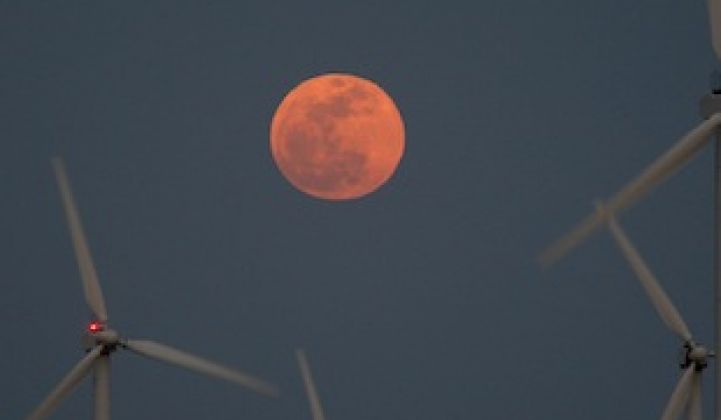Sometimes getting bigger isn't the same as growing up. California's cleantech economy has slowed its intense growth cycle in recent months, but the emergence of new creditworthy investors and intensifying technology innovation in the state has helped consolidate the gains of the last few years.
That's the message of the latest California Green Innovation Index, released today by the organization Next 10 and compiled by Collaborative Economics.
"Market uncertainty and low natural gas prices caused some skittishness with investors last year," said Dan Adler, advisor to Next 10 and President of CalCEF Ventures, a venture capital fund created to accelerate investment in California's clean energy economy. "Despite one tough year, California's clean economy businesses are resilient. They are tapping new financing sources and will continue to be top national and international draws for investment."
Some of the top-line conclusions of the index:
- Renewable electricity generation grew 28 percent between 2007 and 2011, surpassing 41,000 gigawatt-hours (GWh) in 2011. The majority of this overall jump can be attributed to wind generation, which doubled over the same time period.
- Energy productivity (GDP produced for each unit of energy consumed) increased by nearly 2 percent from 2009 to 2010, even as the same measure declined by about 1 percent for the rest of the United States.
- Overall public and private investment in clean technology dropped 42 percent to $3.75 billion in 2012, returning to 2008 levels, due to factors including market uncertainty, changes in national policy, and the maturation and consolidation of companies in the sector. At the same time, some sectors, including clean transportation, received large increases in funding. Investment in that segment grew 44 percent from 2011 to 2012, reaching nearly $1 billion.
- Silicon Valley continues to attract the most clean technology venture capital in California, with 43 percent 6($1.1 billion) of the total ($2.6 billion) in 2012.
Jobs were also a significant focus for the sector in 2012, as the promise of wide-scale manufacturing employment seemed to fade during the debates over stimulus funding that rocked last year's presidential election. The clean jobs results were comparatively disappointing, growing more slowly than the broader state employment figures, although some areas -- like the category of advanced materials -- significantly outpaced the broader economy.
For the full report and more, click here.
***
Editor's note: This article is reposted in its original form from AOL Energy. Author credit goes to Peter Gardett.



